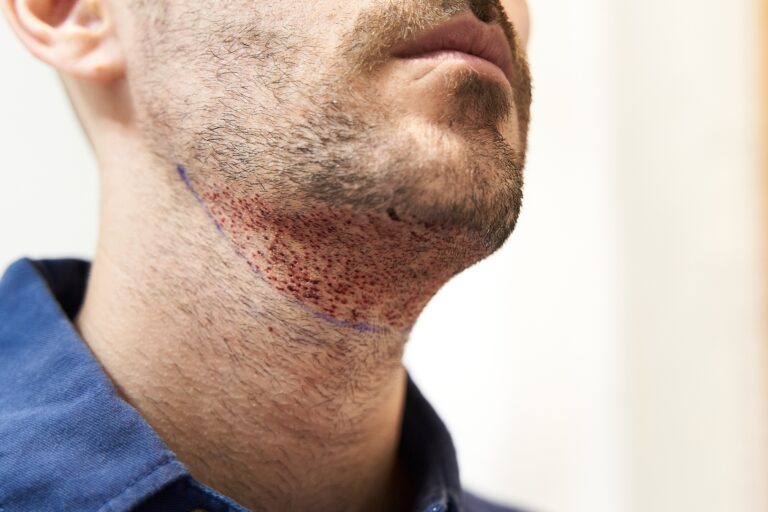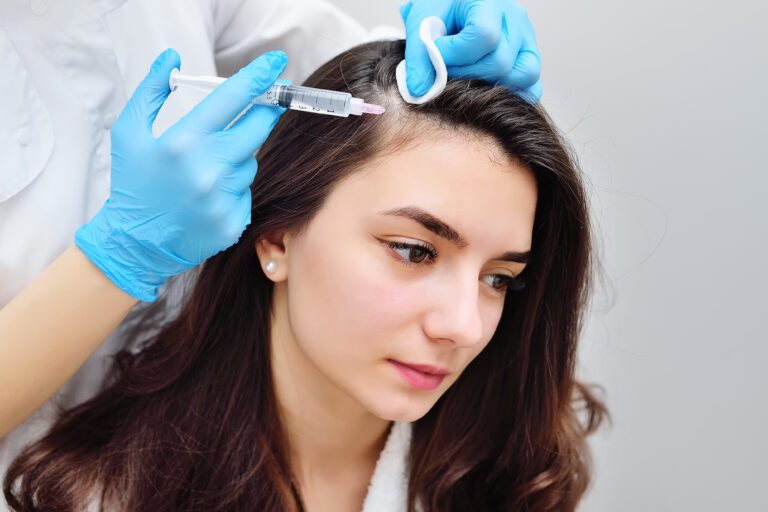When and How to Use Minoxidil (Rogaine) After a Hair Transplant
Surgeons recommend the use of Minoxidil after hair transplant due to its efficiency in stimulating hair growth. It can reduce hair loss during the shock phase and will serve as a preventive measure for future hair loss.
Patients can use Minoxidil two weeks after the hair transplantation. You can apply one milliliter of topical foam twice daily. Alternatively, you may use the 5% minoxidil solution or take the dosage your doctor prescribed for oral tablets.
In this article, we’ll dig deeper into the details of when and how to use Rogaine after hair transplant. If you’re using other topical hair solutions like Finasteride or Dutasteride and want to combine them with Minoxidil, our guide will give you the relevant details you need to know.
Is Minoxidil (Rogaine) Effective?
Minoxidil is a short-term therapy for hair loss-related problems. Although it doesn’t eliminate DHT, a hormone that promotes male pattern baldness, this medication is effective in stimulating hair growth. Constant use of Minoxidil will ensure that your hair won’t deteriorate.
Rogaine or Regaine, the brand name of Minoxidil, has been around the market for a long time. This medication improves the growth rate of transplanted hair. Plus, it slows down the thinning and shedding of hair.
For a potentially better result, some specialists recommend pairing Rogaine with topical finasteride or topical dutasteride. Since these medications target different aspects of male pattern baldness, it’s more efficient to combine them.
How Long Does Minoxidil (Rogaine) Take Effect?
Rogaine will take effect within the first month of use. However, it takes time before you can see the full result—about four to six months.
While you’re using Minoxidil, it’s natural to experience hair shedding. Yet, after the fallouts, the hair will grow thicker and stronger.
It’s important that when you commit to Minoxidil, you’re prepared to use it long-term. When you stop the treatment, the hair regrowth will also stop, and your hair loss problem will resume.
Some patients who don’t want to rely on Minoxidil forever opt for hair transplantation instead.
Should You Stop Using Minoxidil (Rogaine) Before Transplant?
If you’re using Minoxidil due to pattern baldness, your surgeon will ask you to stop using it three weeks before the hair transplant procedure.
Since Minoxidil maintains healthy hair and keeps it from thinning, your surgeon won’t see the full state of your hair loss problem. Once you pause using Rogaine, it’ll have a reverse effect and your hair will start falling again.
Through this, your surgeon can assess the extent of baldness he needs to work out.
When to Resume Minoxidil After Hair Transplant?
Resuming Rogaine after a hair transplant isn’t necessary, but you may take it if you want to or if your surgeon advises you to. Typically, your surgeon will recommend the use of Minoxidil two weeks after the hair transplant procedure.
It’ll allow the newly transplanted hair to settle in before external factors affect them.
Resuming the use of Minoxidil will keep your existing hair growing and prevent it from thinning or falling. Plus, it’ll promote faster and healthier regrowth of the transplanted hair follicles.
In case you experience itching or irritation, you can always consult your surgeon for advice on how to proceed.
How to Use Minoxidil After Hair Transplant?
Minoxidil comes in two preparations: topical foam and topical solution. Oral tablets are available, too. For an in-depth explanation of how to use each of them, we’ll discuss them in the following sections.
Minoxidil Topical Foam
You can use one milliliter of Minoxidil foam twice daily. You can apply it once in the morning and another in the evening.
Yet, according to experts from the Hair Loss Show, this medication can last in the hair for 21 hours. Hence, applying it once daily is reasonable too.
Here’s how you can apply the Minoxidil topical foam:
- Pour the recommended amount of topical foam onto your fingers.
- Spread the topical foam over the entire crown area.
- Massage your scalp gently.
- Wash your hair immediately after using Minoxidil.
Minoxidil Topical Solution
You should use the 5% topical solution twice daily.
Higher percentages, such as 7% and 10%, are more expensive than the recommended 5% but don’t make much difference. Hence, it’s more practical to use the latter.
Here’s how to apply the topical solution:
- Keep your hair and scalp dry.
- Apply the recommended or prescribed amount, starting from the scalp and then onto the entire crown area.
- Apply the solution directly on the scalp and not the hair.
- Massage it to allow blood flow.
- Let it sit there for two to four hours before shampooing or before going to bed, as it can stain the linen.
Oral Minoxidil
Some patients complain about the itchy or greasy effects of topical Minoxidil on their heads. Hence, they opt for the Minoxidil tablet instead.
Oral Minoxidil is available in 0.652 milligrams and up to 5 milligrams.
A recent study shows that 5 milligrams of oral minoxidil significantly increased hair growth in men experiencing pattern baldness. While hair loss conditions differ from one person to another, you can seek your surgeon’s advice as to what dose will be good for you.
Oral Minoxidil may have side effects for patients with certain health conditions, so surgeons may recommend lower dosages.
What Are the Side Effects of Using Minoxidil After Hair Transplant?
While Rogaine is a safe medication, some patients may experience side effects. If this happens, it’s best to seek the surgeon’s advice.
- It’s rare, but you may experience redness and irritation in areas where you applied the topical solution.
- While it’s normal, you’ll still experience hair shedding in the first few weeks or months of using Minoxidil.
- Some patients, especially girls, will have increased hair growth in some parts of their bodies.
How Long Should You Take Minoxidil After Hair Transplant?
You can take Rogaine for at least 6 months after hair transplants. However, you may extend it for as long as you can tolerate. It’ll keep your existing hair healthy and prolong the longevity of the transplanted hair.







